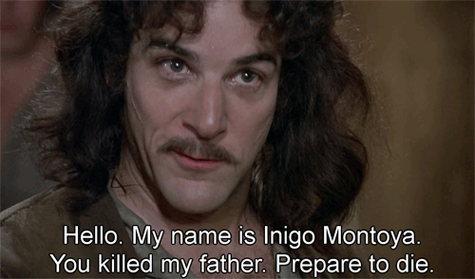When you look at the big picture, finding clients on the internet is kind of like online dating. You put information out there (on social media, a website, a platform…) and you hope that the right person will see it and decide to contact you. And sometimes it can feel just as hopeless.
The thing is, way more people are looking for love than for business opportunities. So, thanks to services like Tinder and OkCupid, we have a vast amount of data on what works and what doesn’t. Why wouldn’t we use this knowledge to grow our businesses? Read on, I already did the homework for you.
This article draws marketing lessons from online dating statistics. I hope you’ll find it interesting, whether you are in the market for a new beau or new clients.
How does copywriting work?
This doesn’t make sense, you might say. Marketing is done by professionals, while, well… we all know the “other fish in the sea” we sometimes encounter on dating sites. Bear with me just a little longer, and I will explain why this is relevant.
Your dating profile is not going to get you a happy relationship. It is not even going to get you laid. It needs to achieve only 3 things:
- stand out and attract attention
- qualify viewers and filter out the ones YOU want to notice you
- make the ideal viewer like you enough to reach out
This is, step by step, what copywriting does. The headline gets you to read the first line. The first line hooks you enough to read the second. And so on. Every part of a text has its own unique job. Have you ever thought about your marketing copy in this way?
If you haven’t, it’s time to do so. And I’ve got more troubling news too: if you’ve been filling out your dating profiles intuitively, chances are you were missing out on opportunities. Just like in marketing, there are best practices and tricks you can use to hack your way to success. Thanks to the granular statistics of every user’s every move, we can learn a great deal about what makes humans tick. I think we can also apply these learnings to our marketing copy.
The best copy tricks to make people act
Turns out a surprising amount of research has been done into online dating behavior. Researchers usually create fake profiles to harvest interaction data, which allows them to collect a larger amount of statistics than an individual user could. So if this contradicts your personal dating experience – you may be the outlier!
Based on online dating profile statistics, here are my best strategies to apply to your copy:
Be concise
Drawing a blank is not an option. You need to show something of yourself to attract your dream partner. Tinder profiles with a bio got 4 times more right swipes than the ones without! So even if you can’t come up with the perfect copy right away, you need to give the online world something.
No need to waffle on too long, though. When your target audience doesn’t know you, they don’t want to put in the energy to read a novel from you just yet. Say what you need to say: who, what, how, and why. Who are you, why are you writing to that one reader, what can you do for them, and exactly how?
This epic line from The Princess Bride is a great example of a short and straightforward introduction:

Assuming your intentions are different from those of Mr. Montoya, you will have plenty of time to tell your dream reader everything you want… once they have fallen in love with you. But let’s not get ahead of ourselves: there is one more step before love.
Disclose information
Trust is the foundation of any relationship – and even more so when said relationship starts online. You need to make sure your target audience believes that you are who you say you are, and that they feel at ease around you. There are a number of ways to do that.
Add specifics
Don’t just say you like dogs – say you have a wise old Briard named Lawrence. Everyone will immediately get a mental image of you and a dog, and all the positive feelings they have about dogs will transfer to you. This is equally true for dating profiles and business copy – small details like names of pets/kids, your hometown, or your hobby, make you more of a relatable person.
Show confidence in yourself
If you don’t believe in yourself, nobody will. Don’t be shy to share that the solution you’re offering has helped 200 working mothers lose the last 10 pounds of baby weight. Or that you have been named Employee of the Month 10 times in a row before you realized that you could go and do this on your own. Give yourself credit where it’s due. I think this is pretty standard advice.
So how about turning this around?
Show vulnerability
Sharing something people are normally embarrassed about makes you vulnerable in front of your reader. If the reader doesn’t know you, that will look like a really bold move. It is very hard to be suspicious of someone who just opened up to you, right?
Business gurus selling high-ticket courses often start their sales letters with their origin story: they got divorced, moved into their parents’ basement and slept on a moldy futon, or something like that. The purpose of this is not only to generate trust, but to bring themselves closer to their target reader’s current situation. Sleeping on your friend’s couch again? Just buy my course and you too can get to where I am today! Sharing the story shows that there is a way.
You don’t have to go full Oliver Twist or write anything made-up: a little bit of self-deprecating humor goes a long way. Even people brilliant at what they do sit on a freshly painted bench sometimes – don’t be afraid to share that.
Use your target client’s language – not your own
I don’t mean English vs. Swahili – hopefully you and your target clients have a common language you can use in your marketing copy. I mean the specific slang and vocabulary they use. No reason to speak industry jargon at them – call your product what they would call it.
Look at these biscuits. What do you think the people who actually buy it call it?

They call them Parrot Cookies.
The way this comes out in dating profiles is that women tend to talk about what kind of partner they are looking for, while men focus more on the activities they want to do with that partner. Now, wouldn’t it make sense to turn it around? A man who filled his profile with the description of the perfect partner might attract exactly the kind of lady who fits the bill. It has the added benefit of focusing on the reader, not the writer, which is always the goal in copywriting.
Use emojis carefully
It goes without saying: emojis don’t have a place in every single copywriting project (although they are widely popular on dating profiles, with an average of 4 per). But if your topic is not ultra-serious (a good rule of thumb is: are people wearing a suit while using the product or service?), and your target audience is under 40, chances are that a couple of 😎🎯🐱 wouldn’t hurt you.
Just stay away from the ambiguous ones (such as 🍆, 💦 and 🍑), unless you know what they mean and are using it deliberately.
Take them where you want them
Have you ever read a Tinder bio that made you wonder if that person is really looking for a partner? Some texts just come across as defensive or off-putting. That might not be intentional, it is just that the author did not consider the emotional impact the text might have on others. And that is going to impact the actions they are going to take.
After you’ve written a marketing text, put it aside for at least 24 hours, then read it again. Even better: show it to a friend. Ask them how they feel after reading it. Did it make them happy and relaxed, ready to move, or did it raise doubts, fear, or mild pissed-offness? Needless to say, you are aiming for the former.
Use your common sense to get a feel of the tone. If that doesn’t work, try the Grammarly extension in your browser! It is just fantastic at telling you what mood your text is. This article, for example, is “informal, friendly and confident”, which is exactly what I was going for.
Now go find that dream client!
These tips are conclusions from actual research that scientist did into what kind of dating site bios induced more right swipes, messages or clicks. I am confident that you can apply them in the world of marketing and attract your dream clients with more success.
I would love to know what you think, and if you tried any of it. Did it work? Do you disagree? Please talk to me! Comments are moderated, but only because spambots are insane – I never censor opinions.
